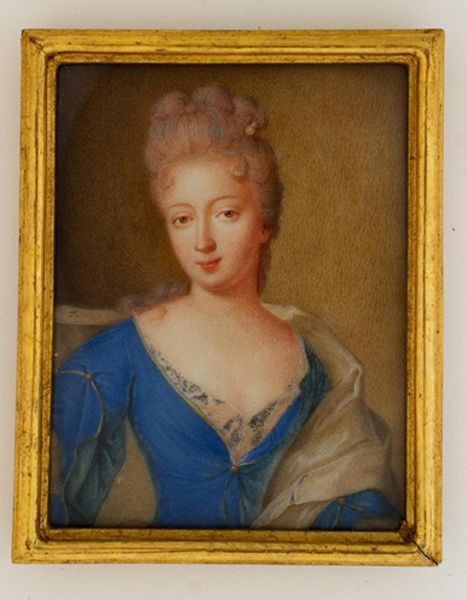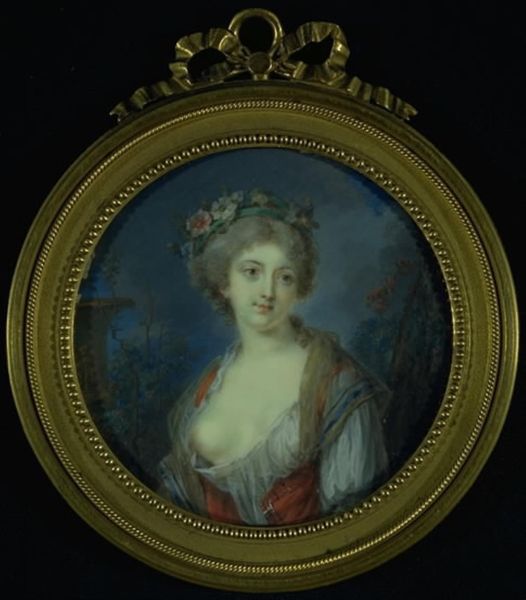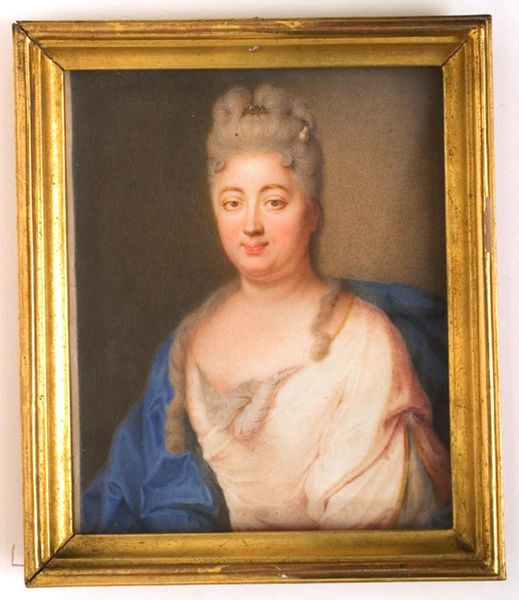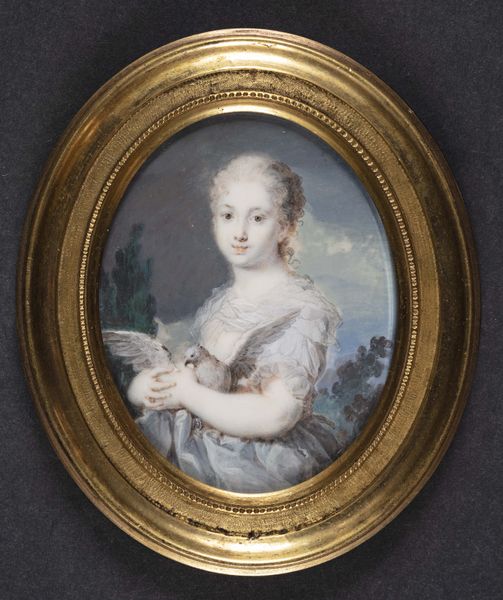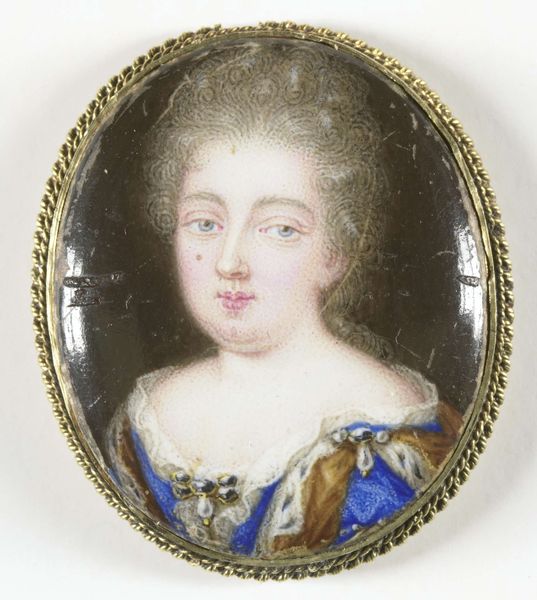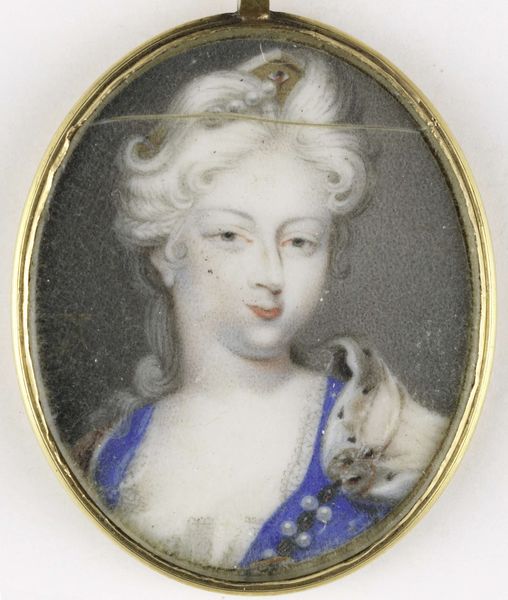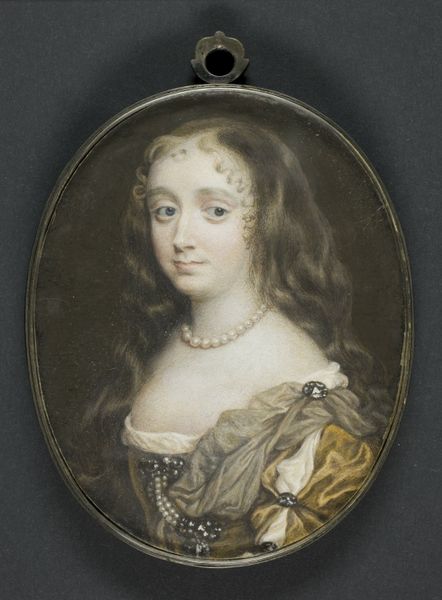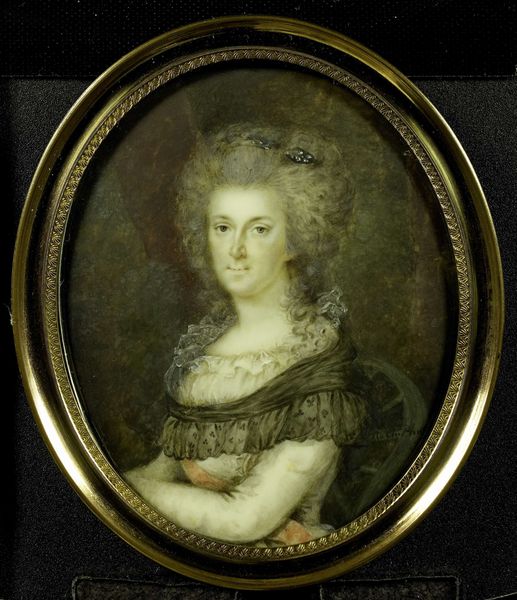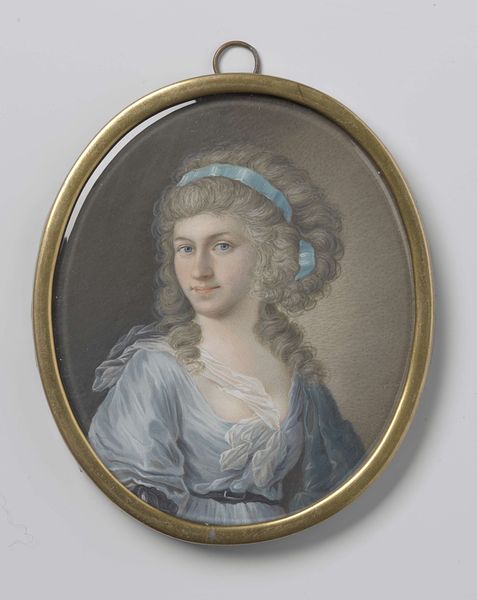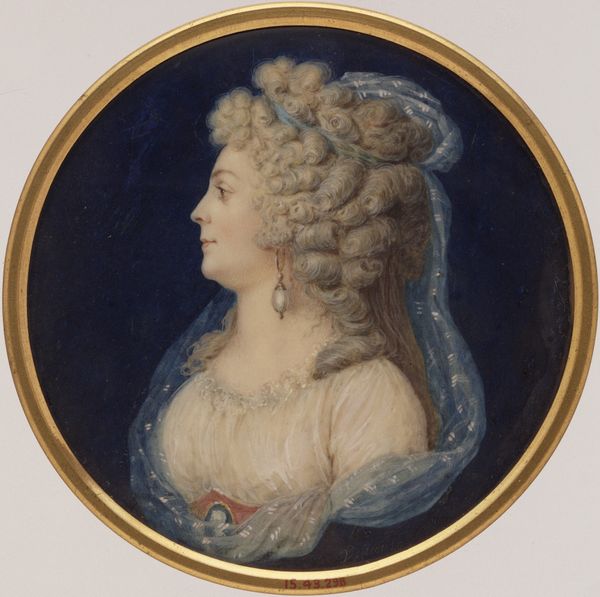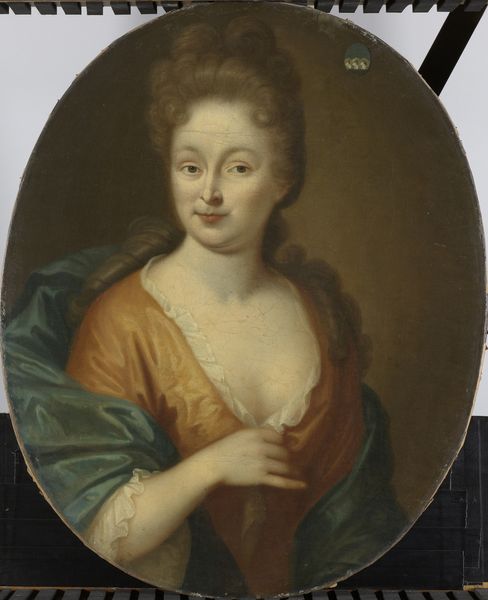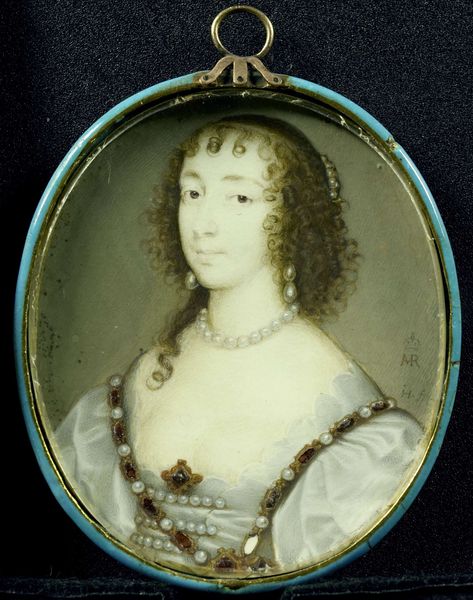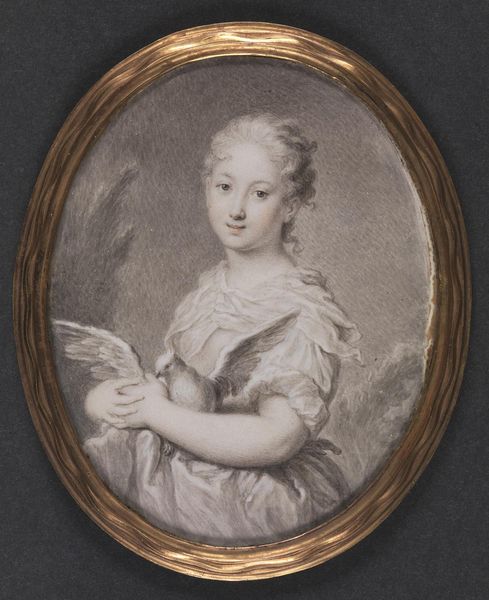
painting
#
portrait
#
baroque
#
painting
#
sculpture
#
strong focal point
#
framed image
#
history-painting
#
miniature
Dimensions: 10 cm (height) x 8.5 cm (width) (Netto)
Curator: Before us is "Portrait of Countess Märta Creutz, née Banér," a 17th-century painting by Joachim Henne. It’s part of the collection at the SMK, the National Gallery of Denmark. Editor: It strikes me as incredibly delicate. The miniaturist scale combined with what appears to be a restrained palette evokes an intimate atmosphere. There is a strange combination of warmth in the background and cool colours in her dress, framing her as a serene central point. Curator: Absolutely. This painting would likely have been made using watercolour and gouache on ivory, which lends it that jewel-like quality. The physical labour involved in crafting such detail on a small scale indicates the sitter's wealth and status. We should also consider that Henne was working in a court environment and was therefore tasked to produce objects of status. Editor: Precisely! Considering the Baroque era's obsession with representing power and privilege, this portrait isn't simply a depiction of Märta Creutz. It’s a carefully constructed performance of her identity within the Swedish aristocracy. The pearls, the elaborate hairstyle, and the regal blue gown – they all communicate her position in society. The artist chooses not only to present her as beautiful, but perhaps more significantly, untouchable, and undeniably powerful. Curator: Indeed. The materials themselves signify wealth and social standing. Natural pigments would have been expensive, while ivory was sourced through trade, underlining global connections. Even the framing itself becomes a part of that narrative. This object operates as an aesthetic product with embedded social significance. Editor: Beyond its material construction and context, this portrait sparks thoughts about women's limited roles in Baroque society. While Märta is memorialized here, the image also confines her. She is to be admired, almost like an ornament, not necessarily recognized for any agency or accomplishments outside her social role. How does an individual negotiate selfhood when constantly presented as an object? Curator: A poignant thought. Thinking about it in those terms makes me consider the skill required to manufacture such a tiny but significant object that captures individual and societal ideals, making it even more relevant to consider from a contemporary perspective. Editor: Agreed. These dialogues between art history, gender, and material analysis are essential. I come away considering what elements from her likeness are performed or captured and what it reveals of both then and now.
Comments
No comments
Be the first to comment and join the conversation on the ultimate creative platform.
